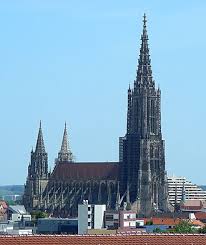The Fascinating World of Loch Ness: Myths, Research and Tourism

Introduction
Loch Ness, located in the Scottish Highlands, is a large, deep freshwater loch that captivates the imagination of millions. Known for its stunning natural beauty and the infamous Loch Ness Monster, this body of water has become a symbol of mystery and folklore. As one of the largest lakes in Scotland, Loch Ness holds significant ecological and cultural importance, prompting ongoing research and tourism initiatives that draw visitors from around the globe.
The Legend of the Loch Ness Monster
The legend of the Loch Ness Monster, affectionately dubbed ‘Nessie’, dates back to ancient times but gained particular prominence in the 20th century. The famous 1934 photograph, known as the ‘serpent-like’ image, ignited curiosity and speculative interest in the creature’s existence. Despite extensive investigations, no conclusive evidence has ever surfaced to prove the monster’s existence, yet the lore continues to thrive. Recent surveys using sonar technology and underwater drones have not uncovered any substantial proof of Nessie, but they have provided vital data concerning the loch’s rich biodiversity.
Current Research and Ecological Importance
Recent studies have pointed to Loch Ness as a valuable site for ecological research. The loch is home to a unique habitat, with a wide variety of fish species, as well as an array of flora and fauna. Conservationists emphasize the need to protect these ecosystems from environmental threats such as pollution and climate change. The Scottish Environment Protection Agency (SEPA) has launched initiatives aimed at monitoring and improving the water quality of Loch Ness, ensuring that its unique habitats are preserved for future generations.
Tourism Impact
The allure of Loch Ness extends beyond the mystery of its mythical inhabitant; it’s a significant contributor to Scotland’s tourism sector. Visitors flock to the loch for boat tours, hiking trails, and historical sites, including the iconic Urquhart Castle. In 2022, Loch Ness received over 800,000 visitors, generating substantial economic benefits for the local community. With ongoing tourism initiatives, such as the proposed Loch Ness 360 Trail, the region will likely continue to thrive as a tourist destination.
Conclusion
The fascination with Loch Ness represents a blend of myth, environmental awareness, and tourism. As research continues and protective measures are implemented, Loch Ness stands as a testament to Scotland’s natural heritage and cultural significance. Whether searching for Nessie or simply enjoying the breathtaking scenery, visitors and locals alike are reminded of the importance of preserving this remarkable landmark for future generations.
You may also like

Explore Fuerteventura: The Jewel of the Canary Islands

Exploring the Tallest Church in the World
